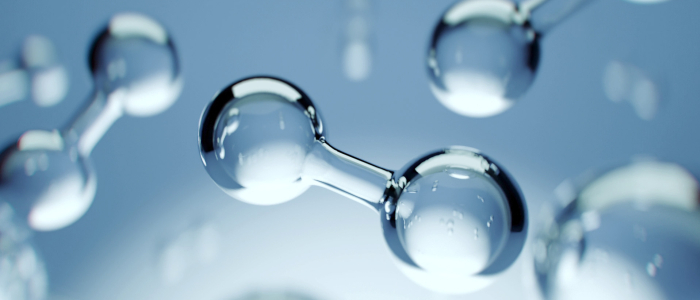
On 29 August 2023, the European Commission published the terms and conditions of its first hydrogen auction, scheduled to begin in November 2023. A total of EUR 800 million has been made available from the Innovation Fund for the pilot auction, which invites bids from hydrogen producers and is aimed at ramping up the hydrogen economy.
Goal
The EU’s hydrogen auctions are intended to financially support the transition to more green hydrogen and reduce the price gap with fossil fuels in the transition’s initial phase – with the objective of mobilising the hydrogen market and facilitating expansion of the market for green hydrogen. Over the terms and conditions’ 16 pages, the European Commission outlines the criteria, assessment mechanism, steps in the award procedure, and many other key elements of the upcoming auction.
What are the procedure’s framework conditions?
The procedure involves a one-stage auction in which companies can bid for financial support for green hydrogen production. The financial support takes the form of a fixed premium paid in EUR/kg of green hydrogen produced; this premium is in addition to market revenue generated by the companies. The support is therefore exclusively output-based, i.e. the premium is only paid for the volumes of hydrogen actually produced. This contrasts with the Innovation Fund’s previous financing programmes, in which payments were made for the purpose of pre-financing or before production facilities entered into operation.
The project is financed by the Innovation Fund, which in turn is funded by the EU Emissions Trading System (“ETS”). The auction procedure is run by the European Climate, Infrastructure and Environment Executive Agency (“CINEA”), which has managed projects of similar scope and size in the past.
What projects are covered?
Projects admitted to the auction must be based in the European Economic Area (EU plus Iceland, Liechtenstein and Norway) and produce green hydrogen classified as a renewable fuel of non-biological origin (“RFNBO”) in accordance with the Renewable Energy Directive (2018/2001/EU) and its delegated acts. The green hydrogen must be produced through water electrolysis using renewable energies. Grey hydrogen from fossil fuels is excluded from the auction, and the terms and conditions provide that bidders be prevented from cross-subsidising their grey hydrogen production through the green hydrogen they receive financial support for.
To qualify, projects must have a minimum new electrolyser capacity of 5 megawatts and be in the pre-construction phase. The published criteria indicate that ordering the requisite technical equipment is considered start of works, whereas buying land or obtaining permits is not. Companies do not need to have received the permits at the time of bidding, but they must have already applied for them.
Hydrogen projects may be excluded from the auction if they are already receiving financial support from other national or EU funds. Such projects are only permitted to the auction in certain cases, such as when financial support has been received for project and capacity development or for transport and storage infrastructure.
What are the bid components and the award criteria?
A bid must include
- the bid price,
- the expected average yearly volume of hydrogen over a ten-year production period, on the basis of which the maximum grant amount can be calculated, and
- the electrolyser capacity that will be installed and ready for operation by the time of entry into operation.
However, the bids will then only be assessed on the basis of the actual bid price, which must be indicated in EUR/kg and is capped at EUR 4.50/kg. Moreover, a bid can only be awarded a maximum of EUR 266.7 million, i.e. 1/3 of the total budget of EUR 800 million.
The approved bids are arranged according to price (from lowest to highest) until the limit of EUR 800 million is reached. If and to the extent bids exceed this limit, they are added to a reserve list. The contract is then awarded to the most competitive bids, i.e. those that can produce green hydrogen with the least amount of financial support. Hydrogen auctions can therefore be compared to German auctions under the Renewable Energy Sources Act (especially for onshore wind and photovoltaic projects), where financial support is also awarded on the basis of the lowest market premium offered.
For proposals with the same bid price, those with an overall smaller maximum grant required, i.e. whose maximum grant amount is the lowest, are given priority. This is likely to include, in particular, smaller production facilities. If priority cannot be determined on this basis, proposals from Member States with fewer funds awarded previously under the Innovation Fund are considered to have higher priority. Since Germany, compared to other European countries, has already financed a relatively large number of projects through the Innovation Fund, it is unlikely that German companies will be prioritized. Finally, the bids can also be ranked according to which projects can start producing hydrogen the soonest.
What happens after a bid is awarded?
If a bid has been selected in accordance with the procedure described, the bidder will receive a letter inviting it to prepare a grant agreement. No later than two months after receiving the invitation, the bidder must submit a completion guarantee from a bank or financial institution covering 4% of the maximum grant amount. This guarantee serves as a safeguard for CINEA in the event that hydrogen production does not commence on time (more on this below).
Before the grant agreement is signed, it is assessed whether the bidder has stable and sufficient financial resources. Once the grant agreement is signed, a grant is generally provided for a period of ten years from the start of hydrogen production. The maximum time to enter into operation is five years after the grant agreement is signed. If the project does not enter into operation within five years, the grant agreement will be terminated and CINEA will call the completion guarantee.
The financial support is paid semi-annually – after production commences – as a fixed premium in EUR/kg of the verified and certified RFNBO hydrogen produced, in addition to the market revenue generated. After the grant agreement is signed, the awarded companies are obliged to prepare reports periodically alongside their payment requests (semi-annually) on the volume and certification of the hydrogen produced.
If more hydrogen is produced than initially specified in the bid, the premium is generally also paid for this surplus. However, this flexible adjustment of the production volume is capped at 140% of the semi-annual production. This means that an increase in the semi-annual production volume by up to 40% compared to half of the expected annual average volume will be supported; a premium will not be paid for a production volume above 140%.
If production falls short of the production volumes specified in the bid, CINEA may reduce financial support and terminate the grant agreement.
Outlook
The first auction is set to begin on 23 November 2023. The bidding phase is expected to end on 8 February 2024. In future, late-stage auctions will be held each year. In such an auction, bidders can see the bids of the other parties and revise and increase their own bids during the course of the auction.
The EUR 800 million budget reflects both the high expectations of the EU for green hydrogen projects and the central role to be played by hydrogen in navigating the energy transition. The auctions planned for November 2023 are only the beginning. The Bundesnetzagentur has announced that the first bidding deadline for hydrogen auctions will be 15 December 2023 – the first milestone: 800 megawatts of green hydrogen.
These initial auctions will give all parties involved a good idea of what additional financial and regulatory efforts will be required in future. The Commission and the Member States will carefully monitor to what extent this approach could also be used for other climate-friendly technologies and products. It will be important to keep an eye on the effects on the market as well as on possible legal challenges.
